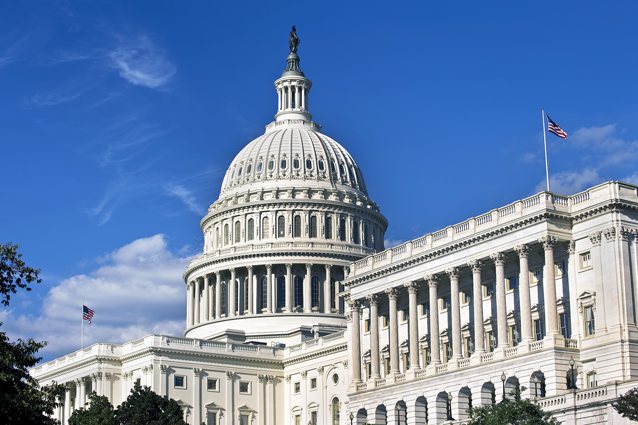Note
Three Key Outcomes of the “One Big Beautiful Bill Act” on US Manufacturing and Innovation
The budget reconciliation bill passed by the House has important implications for US technology investment, manufacturing, and innovation.

Rhodium Group’s Energy & Climate practice uses a multidisciplinary, data-driven approach to produce unique, independent insights into global energy dynamics, greenhouse gas emissions, and climate change.
We help public and private decision-makers understand what kind of climate future we are on track for, and what matters most for reducing greenhouse gas emissions—at the local, state, national, and international levels. By combining policy expertise with a suite of detailed energy-economic models, our research provides data-driven insights into the impacts of energy and climate change policy and real-world developments on greenhouse gas emissions, energy markets, economic output, and clean technology pathways.
Note
The budget reconciliation bill passed by the House has important implications for US technology investment, manufacturing, and innovation.
Note
The House Ways and Means Committee's proposed language will raise energy costs for American households by as much as 7% in 2035, stifle energy technology innovation, increase pollution, and could put significant investment at risk.
Report
In the first quarter of 2025, clean energy and transportation investment in the United States totaled $67.3 billion, a 6.9% increase from the same period in 2024 but a 3.8% decrease from the previous quarter.
Note
Since the US enacted the IRA, manufacturing has emerged as the fastest-growing segment of investment in clean energy technologies. We assess the state of key clean technology supply chains for solar, wind, batteries, and electric vehicles.
Filters:
Showing 131 – 140 of 220 total results
Report
We partnered with BlackRock, the world’s largest asset management company, in conducting a physical climate risk assessment for their US municipal bond, commercial real estate, and electrical utility holdings.
Note
After three years of decline, US carbon dioxide (CO2) emissions rose sharply last year. Based on preliminary power generation, natural gas, and oil consumption data, we estimate emissions increased by 3.4% in 2018.
Note
In the context of the global effort to address climate change, our analysis finds the Trump administration's proposal would be a pretty meaningful setback.
Report
This paper presents the results of an independent analysis of the impacts on emissions, energy markets, revenues and the economy of the Curbelo proposal.
Report
This independent report prepared for the Columbia SIPA Center on Global Energy Policy finds a carbon tax can drive substantial reductions in US GHG emissions in the near and medium term.
Report
We find that US emissions under current policy are heading towards 12 to 20% below 2005 levels in 2025, a far cry from the US Paris commitment of a 26-28% reduction.
Note
While carbon pricing is gaining new momentum within a growing number of states, prices apply to only a fraction of total greenhouse gas (GHG) emissions and prices are relatively low.
Note
The footprint-based system of CAFE standards gives automakers flexibility to comply, even when gas is cheap and drivers opt for less efficient cars. But low oil prices make the standards themselves more important as a driver of fuel economy gains.
Report
What does the future hold for Hawaii? We find it is cheaper to accelerate the clean energy transition than cruise toward the 2045 renewables targets.
Report
What was already the largest blackout in American history has now likely become, in our analysis, the second largest blackout in the world.












